Don't wanna be here? Send us removal request.
Text
Week 10: Online harassment
The internet has changed from being a place for empowerment and connection to becoming a haven for online harassment, a widespread issue that affects millions of people globally through a variety of harmful behaviors, such as being called derogatory names, threatened, sexually harassed, impersonated, or having rumors about oneself spread (Willard et al., 2007).

Some of the people who commit such crimes do so for "fun" or amusement, but many do so for darker motives like political agendas or personal disputes. The global crisis reflects and exacerbates societal inequalities by disproportionately affecting marginalized groups.

The amount of online harassment is alarming. According to Plan International (2020), 59% of girls in 31 countries have encountered abusive language online, highlighting the fact that this is a global problem rather than a local one. Haslop et al. (2021) found that targeted individuals are more likely to be women and transgender, reflecting broader societal prejudices where sexism, racism, and transphobia manifest both offline and online. Furthermore, The Guardian (2016) reported that 8 out of 10 of the most abused writers were women, half of whom were non-white, demonstrating how intersecting identities increase the likelihood of harassment.
The consequences of online harassment are severe and long-term. Victims frequently experience emotional trauma, anxiety, and depression (Lindsay et al. 2016). For example, women in the gaming industry experienced social shaming, threats, and doxing during the Gamergate controversy, which led many of them to quit the industry entirely (Thiago Alves-Pinto, 2014). In addition to silencing individuals, such harassment exacerbates structural obstacles that keep underrepresented groups from fully engaging in digital spaces. The Economist Intelligence Unit (2021) discovered that more than one-third of women worldwide have experienced online abuse, with nearly half of younger women reporting such incidents.

Thus, a variety of solutions have been proposed to combat online harassment, and one of the most effective solutions to combat online harassment is to use "humor." Comedians Amy Schumer and Hannah Gadsby have used humor to address harassment, turning traumatic events into moving stories that promote awareness and unity (Leng, K., 2020). Social media platforms like Twitter (X) or Tumblr have also become hubs for collective resistance. As people shared their stories online, the #MeToo movement gained popularity and support from people all over the world (Suk et al., 2019). Besides, TikTok trends have empowered users to reclaim control of their stories by utilizing humor and creativity to combat harassment and foster resilience.

REFERENCES
Haslop, C., O’Rourke, F., & Southern, R. (2021). #NoSnowflakes: The toleration of harassment and an emergent gender-related digital divide, in a UK student online culture. Convergence: The International Journal of Research into New Media Technologies, 27(5), 1418–1438. https://doi.org/10.1177/1354856521989270
Leng, K. (2020). Uproarious: How Feminists and Other Subversive Comics Speak Truth by Cynthia Willett and Julie Willett (review). Studies in American Humor, 6(2), 364–367.
Lindsay, M., Booth, J. M., Messing, J. T., & Thaller, J. (2016). Experiences of Online Harassment Among Emerging Adults. Journal of Interpersonal Violence, 31(19), 3174–3195. https://doi.org/10.1177/0886260515584344
Suk, J., Abhishek, A., Zhang, Y., Ahn, S. Y., Correa, T., Garlough, C., & Shah, D. V. (2019). #MeToo, Networked Acknowledgment, and Connective Action: How “Empowerment Through Empathy” Launched a Social Movement. Social Science Computer Review, 39(2), 089443931986488. https://doi.org/10.1177/0894439319864882
Thiago Alves-Pinto. (2014). “GamerGate” and Gendered Hate Speech | OHRH. Oxford Human Rights Hub. https://ohrh.law.ox.ac.uk/gamergate-and-gendered-hate-speech/
Willard, N. E., & Crowell, C. R. (2007). Cyberbullying and cyberthreats: responding to the challenge of online social cruelty, threats and distress [Review of Cyberbullying and cyberthreats: responding to the challenge of online social cruelty, threats and distress]. Journal of Moral Education, 36(4), 527–527.
0 notes
Text
Week 9: Competitive Gaming (Esports)
Video game culture has continuously changed in recent years, especially in terms of its social aspects. Multiple players had to be physically present to play against or with each other in the early days of gaming, such as when playing arcade games. These days, this has changed to digital connections made possible by online devices, which enable users to interact with both new and existing players in video game worlds.

Esport, also known as competitive gaming, has become an important factor in the global entertainment sector, changing our understanding of video games and their cultural relevance (Meadows & Grubb, 2018). A once-specialized pastime has grown into a multibillion-dollar industry with professional athletes, enormous prize pools, and a devoted following around the world. In addition to reinventing gaming, esport has become a respectable career choice and a cultural phenomenon that unites technology, entertainment, and sports.

The large range of competitive gaming is among its most remarkable features. In terms of viewership and income, esport competitions are now on par with traditional sporting events. The League of Legends World Championship regularly attracts millions of viewers worldwide, for instance, the 2024 finals drew a peak concurrent viewership of over 6.94 million, which was recorded as the most-watched esports match in history ((Christine, 2024; Statista, 2025).
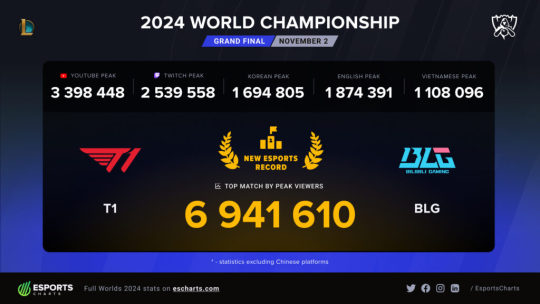
Likewise, Dota 2's The International is well-known for its massive prize pools, which regularly exceed $40 million and are primarily funded by community in-game purchases (Ocal, 2020).
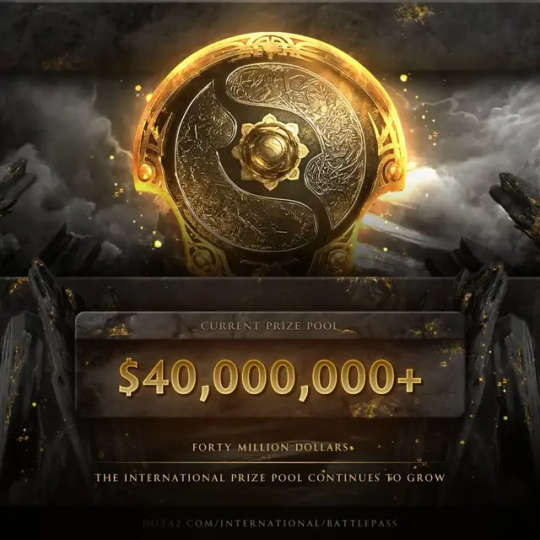
With their lavish opening ceremonies, expert commentary, and stadiums packed with live fans, these events are spectacles rather than games. Esports has a significant economic impact, thanks to partnerships with traditional sports teams and celebrities, as well as sponsorships from well-known companies such as Red Bull, Intel, and Coca-Cola (Fielding, 2025).

One of the main factors contributing to their success is the integration of esport with streaming services like Twitch, YouTube Gaming, and Facebook Gaming. Esports events are accessible to anybody with an internet connection, unlike traditional sports, which are usually only broadcast on television. Fans can engage with other viewers through live chat, watch their favorite players and teams in real time, and even support players by subscribing or making donations thanks to streaming (Hou et al. 2020). A highly interconnected global community is the outcome of this degree of accessibility and interaction. For example, Twitch, the leading platform for gaming content, began as a gaming and eSports-focused live streaming service in 2011 and in its first year attracted 3.2 million users monthly, with esports tournaments consistently topping its most-watched lists. (Dean, 2023).
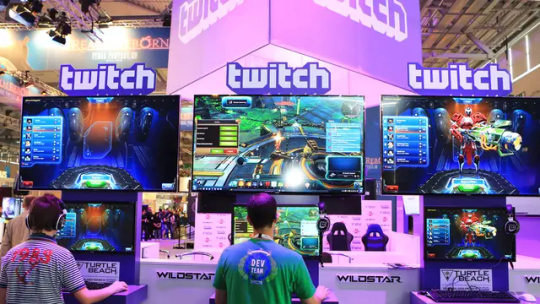
Competitive gaming has a huge cultural impact. It has united gamers from all backgrounds and broken down barriers. Furthermore, esports have dispelled myths by demonstrating that gaming is a popular pastime rather than a niche one. A new generation of gamers has also been motivated to follow their dreams, whether they be those of competitors, fans, or creators.
REFERENCE
Ocal. (2020, October 9). Dota 2’s The International surpasses $40 million in prize money - ESPN. ESPN.com; ESPN. https://www.espn.com/gaming/story/_/id/30079945/dota-2-international-surpasses-40-million-prize-money
Christine. (2024, November 4). Worlds 2024 Finals is the most-watched esports match in history. Esports.gg; esports.gg. https://esports.gg/news/league-of-legends/worlds-2024-finals-most-watched-esports-match/
Dean, B. (2023, August 23). Twitch Usage and Growth Statistics: How Many People Use Twitch in 2021? Backlinko. https://backlinko.com/twitch-users
Fielding, R. (2025, January 19). Esports and Big Brands: New Sponsorship Deals. Onevalefan.co.uk; onevalefan. https://www.onevalefan.co.uk/2025/01/esports-and-big-brands-new-sponsorship-deals/
González-Moreno, S. E., Palma-Ruiz, J. M., & Caro-Lazos, L. E. (2022). Marketing Strategies for Esports. Esports and the Media (1st Ed., Pp. 52–68). Routledge. https://doi.org/10.4324/9781003273691-7
Hou, J., Yang, X., & Panek, E. (2020). How About Playing Games as a Career? The Evolution of E-Sports in the Eyes of Mainstream Media and Public Relations. International Journal of Sport Communication, 13(1), 1–21. https://doi.org/10.1123/ijsc.2019-0060
Meadows, J. H., & Grubb, M. (2018). Esports. In Communication Technology Update and Fundamentals (16th ed., pp. 233–239). Routledge EBooks. https://doi.org/10.4324/9780203702871-19
Statista. (2025, January 16). League of Legends championships viewers 2018. Statista. https://www.statista.com/statistics/518126/league-of-legends-championship-viewers/
0 notes
Text
Week 8: Beauty Filters
Beauty filters have gained popularity on social media platforms, changing how people show themselves online and impacting how society views beauty in general. Beauty filters that improve symmetry, smooth skin, and change facial features have become popularized by apps like Instagram and Snapchat, producing an idealized beauty that is frequently unachievable in real life (Miller & McIntyre, 2022). These filters can be entertaining and imaginative, but they also reinforce homogeneous beauty standards, which contribute to the worldwide discussion about body image, self-esteem, and the psychological impacts of digital self-presentation.
The popularity of beauty filters is undeniable. One example of a popular filter is the "shiny fox" filter made by @sasha_soul_at, which has gotten 2 billion impressions. By emphasizing characteristics like fuller lips, smaller noses, and perfect skin, these filters usually promote an exclusive and unrealistic ideal of beauty. Although they might seem harmless, their widespread use has detrimental effects. Users may feel pressured to fit in by these filters' promotion of a single ideal of beauty, which makes them feel “I’m not pretty enough."

The popularity of beauty filters is greatly influenced by cultural norms. According to Rettberg (2014), there is a common understanding of what we are "supposed to document" on social media sites such as Instagram, which often consists of carefully chosen and filtered photos that follow societal standards of beauty. People may use filters to portray an idealized version of themselves as a result of this cultural pressure, which can reinforce unrealistic standards. Users' confidence may gradually be undermined if they start to perceive their unfiltered selves as insufficient or ugly.

The psychological effects of beauty filters can be better understood by applying theories such as the Objectification Theory (Fredrickson & Roberts, 1997) and the Social Comparison Theory (Festinger, 1954). Initially, people use the Social Comparison Theory to evaluate their own value by comparing themselves with others, which can result in negative self-perceptions when they fall short of idealized standards (Collins, 1996). On the other hand, according to the Objectification Theory, beauty filters lead users to view their bodies as objects that need to be improved rather than as fundamental parts of who they are (Moradi & Huang, 2008).
Furthermore, according to Elias et al. (2017), the popularity of beauty filters also reflects broader societal trends linked to neoliberal and postfeminist ideologies that place an emphasis on personal responsibility for self-improvement and appearance. In this regard, beauty filters are both tools for self-expression and labor, requiring users to invest time and energy into developing a "perfect" online persona. In order to conform to social norms, people may feel pressured to use filters, which further distances them from their actual selves and can result in a cycle of dependency.
The popularity of beauty filters has raised concerns about their impact on vulnerable groups, particularly young people (Re & Bruno, 2024). Users find it harder to distinguish between real and altered images as filters become more complex and widely available, blurring the line between reality and digital enhancement. This can make issues with body image worse, particularly for teenagers who are still forming their identities. As people become obsessed with perceived imperfections in their appearance, the pressure to meet filtered beauty standards can lead to low self-esteem, depression, and even body dysmorphic disorder.
REFERENCE
Collins, R. L. (1996). For better or worse: The impact of upward social comparison on self-evaluations. Psychological Bulletin, 119(1), 51–69. https://doi.org/10.1037/0033-2909.119.1.51
Elias, A., Gill, R., & Scharff, C. (2017). Aesthetic Labour: Beauty Politics in Neoliberalism. Aesthetic Labour, 3–49. https://doi.org/10.1057/978-1-137-47765-1_1
Festinger, L. (1954). A theory of social comparison processes. Human Relations, 7(2), 117–140.
Fredrickson, B. L., & Roberts, T. A. (1997). Objectification theory: Toward understanding women’s lived experiences and mental health risks. Psychology of Women Quarterly, 21(2), 173–206.
Miller, L., & McIntyre, M. (2022). From surgery to cyborgs: A thematic analysis of popular media commentary on Instagram filters. New Media & Society, 24(1), 123–140.
Moradi, B., & Huang, Y.-P. (2008). Objectification Theory and Psychology of Women: A Decade of Advances and Future Directions. Psychology of Women Quarterly, 32(4), 377–398. https://doi.org/10.1111/j.1471-6402.2008.00452.x
Re, A., & Bruno, F. (2024). Exploring the influence of social media and beauty filters on body image in adolescents and young women. Sistemi intelligenti, 36(3), 649-667.
Rettberg, J. (2014). Seeing Ourselves Through Technology. Palgrave Macmillan. https://doi.org/10.1057/9781137476661
0 notes
Text
Week 7: Body Modification on Visual Social Media
Social media has become a double-edged sword in the digital age, fostering creativity and connections while simultaneously upholding unattainable beauty standards that fuel a global body image crisis. There is an abundance of carefully chosen photos of "perfect" faces and bodies on Instagram, TikTok, and Snapchat, many of which have been changed or filtered to meet unrealistic beauty standards (Gill, 2024). For young people, who are particularly vulnerable to these influences, constant exposure to idealized beauty standards has major psychological and physical repercussions.

One of the most significant effects of social media on body image is the pressure to adhere to online beauty standards. Influencers and celebrities frequently post heavily edited photos that highlight their flawless skin, sculpted bodies, and symmetrical features. These unrealistic images frequently set a bar for beauty that many users feel pressured to reach. This pressure can lead to low self-esteem and depression as people compare themselves to unrealistic ideals and feel insecure. According to Vittoria Franchina and Gianluca Lo Coco (2018), excessive social media use is linked to higher levels of body dissatisfaction, particularly among teenagers and young adults.

Excessive cosmetic surgery has also increased as a result of a desire for these unachievable goals. Thus, there are more and more people who want to try to look like social media influencers by having lip fillers, nose jobs, and body contouring (Rodner et al., 2021). In addition, eating disorders like bulimia and anorexia are a terrible consequence of the social media-induced body image crisis (Thompson & Heinberg, 1999). There is an abundance of content on platforms that promotes extreme dieting, "fitspiration," and thinspo, or "thinspiration," all of which promote unhealthy body types and behaviors (Martin et al., 2023). Vulnerable individuals may develop disordered eating habits as a result of these posts, and they may turn to risky means to get the body they desire.

According to Alhazmi et al. (2024), social media is also contributing to the rise in Body Dysmorphic Disorder (BDD), a mental health disorder identified as an obsession with perceived imperfections in one's appearance. Individuals with BDD frequently spend hours examining their appearance in photos or mirrors, convinced that they are unattractive or abnormal. These negative feelings are exacerbated by the countless opportunities for comparison and self-criticism that social media offers. As a result, continuous interaction with “perfect” photos can worsen symptoms, leading to extreme depression, anxiety, and even thoughts of suicide (Laughter et al., 2023).

It's important to recognize that social media photos are typically heavily edited or faked in order to meet those unreal beauty standards. Users, especially young people, can be empowered to critically analyze and challenge beauty trends by being taught media literacy. Influencer content should be regulated by platforms to guarantee that it discloses any edits and encourages positive body images (Audrezet et al., 2020).

It's important to promote self-acceptance because real beauty isn't limited to carefully manicured internet trends. We can change the conversation toward body positivity and lessen the harmful effects of social media comparisons by promoting authenticity and valuing individuality (Merino et al., 2024).

REFERENCE
Alhazmi, A. Y., Faqih, S. N., Alsalem, B. S., Alsalem, M. S., & Alnoman, H. (2024). Plastic Surgeons’ Attitudes and Understanding of Body Dysmorphic Disorder. Cureus, 16(10). https://doi.org/10.7759/cureus.72630
Audrezet, A., de Kerviler, G., & Guidry Moulard, J. (2020). Authenticity under threat: When Social Media Influencers Need to Go beyond self-presentation. Journal of Business Research, 117(1), 557–569. https://doi.org/10.1016/j.jbusres.2018.07.008
Gill, R. (2024). Perfect: feeling judged on social media: a roundtable discussion. Feminist Media Studies, 1–5. https://doi.org/10.1080/14680777.2024.2422343
Laughter, M. R., Anderson, J. B., Maymone, M. B. C., & Kroumpouzos, G. (2023). Psychology of Aesthetics: Beauty, Social Media, and Body Dysmorphic Disorder. Clinics in Dermatology, 41(1), 28–32. https://doi.org/10.1016/j.clindermatol.2023.03.002
Martin, G., Portingale, J., Fuller-Tyszkiewicz, M., & Krug, I. (2023). Do appearance comparisons mediate the effects of thinspiration and fitspiration on body dissatisfaction, happiness, and disordered eating urges in women’s daily lives? Body Image, 46, 108–116. https://doi.org/10.1016/j.bodyim.2023.05.006
Merino, M., Tornero-Aguilera, J. F., Rubio-Zarapuz, A., Villanueva-Tobaldo, C. V., Martín-Rodríguez, A., & Clemente-Suárez, V. J. (2024). Body perceptions and psychological well-being: A review of the impact of social media and physical measurements on self-esteem and mental health with a focus on body image satisfaction and its relationship with cultural and gender factors. Healthcare, 12(14), 1–44. https://doi.org/10.3390/healthcare12141396
Rodner, V., Goode, A., & Burns, Z. (2021). “Is it all just lip service?”: on Instagram and the normalisation of the cosmetic servicescape. Journal of Services Marketing, ahead-of-print(ahead-of-print). https://doi.org/10.1108/jsm-12-2020-0506
Thompson, J. K., & Heinberg, L. J. (1999). The Media’s Influence on Body Image Disturbance and Eating Disorders: We’ve Reviled Them, Now Can We Rehabilitate Them? Journal of Social Issues, 55(2), 339–353. https://doi.org/10.1111/0022-4537.00119
Vittoria Franchina & Gianluca Lo Coco. (2018). The influence of social media use on body image concerns. International journal of psychoanalysis and education, 10(1), 5–14.
1 note
·
View note
Text
Week 6: Slow Fashion
Over the past few decades, the fashion industry has seen a significant transformation as fast fashion retailers like Shein, Zara, H&M, and Forever 21 have revolutionized how consumers consume clothing. Fast fashion's growth has significantly changed how consumers buy clothing, transforming the once-slow, seasonal business into one driven by trends. This change, most evident in Zara's increased production, has made fashionable clothing more broadly available and affordably priced, but at a tremendous cost to the environment (Cardona, 2024).

The fashion industry is now the world's third-largest polluter, taking into account 10% of total carbon emissions. Beyond carbon emissions, fast fashion's environmental impact includes water consumption and waste generation. The industry consumes a massive amount of water, enough to meet the annual needs of 5 million people, and accounts for 20% of global wastewater (Cardona, 2024). Water pollution and CO2 emissions are greatly increased by the dyeing and finishing processes, which are essential for adding chemicals and color to textiles. In addition, there is a huge waste problem as a result of the quantity of fast fashion produced having doubled since 2000 (Igini, 2023). The use of recycled polyester, which is frequently made from plastic bottles rather than used clothing, is actually decreasing, and less than 1% of discarded clothing is recycled into new clothing (Cardona, 2024). Many of these problems can be related to the high demand for clothes from both brands and consumers in order to keep up with ever-evolving and current trends.
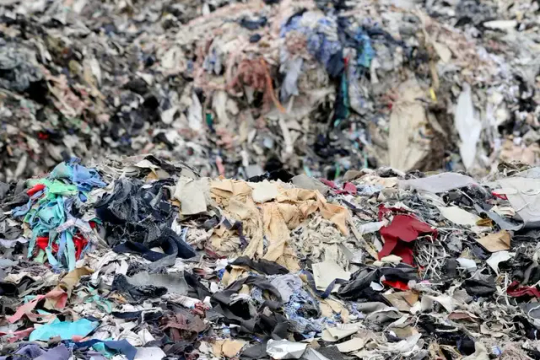
One of the best examples of how the fashion industry affects the environment is Shein, the largest fast fashion brand in the world. Shein's business model is based on extremely fast production cycles, generating thousands of new products daily at extremely low prices (Jin et al., 2023). This low-cost strategy and quick turnover exacerbate the environmental problems associated with fast fashion because many internet users are aware of Shein's low-quality clothing that is likely to be thrown away soon after use, along with other issues with the store.
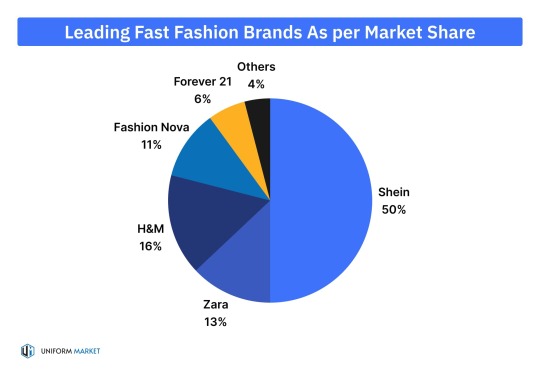
Due to the negative impacts of fast fashion brands, slow fashion has become popular as a sustainable solution to these problems. It encourages people to "focus on quality rather than quantity" (Barletta et al., 2024), which helps to lessen mass production and its harmful effects on all living things. The rise of slow fashion, characterized by its emphasis on ethical production, durability, and mindful consumption, is gaining significant traction. Statistical evidence underscores this shift, with the ethical fashion market demonstrating an impressive average annual growth rate of 8.3%, projected to potentially escalate to 9.7% by 2030 (Ruiz, 2024). This growth reflects increasing consumer awareness of the environmental and social costs associated with fast fashion.

However, slow fashion's commitment to high-quality materials and ethical manufacturing practices results in higher prices, posing a significant barrier to widespread adoption and effectively limiting their customer base (Ramonienė, 2023). Even the second-hand market, which is frequently advertised as a less expensive option, has drawbacks. Popular platforms like Depop frequently feature thrifted items priced above their original retail value or inflated beyond their true worth, further limiting access for budget-conscious shoppers (Barillas, 2024).
REFERENCE:
Barillas, I. (2024, March 22). Depop: How an Ecommerce Boom Has Changed Fashion for Gen-Z A. StoryMaps; Esri. https://storymaps.com/stories/4c3f9b44f87a4efe8d506634cea7bcc0
Barletta, M., Idiano D'Adamo, Jose Arturo Garza‐Reyes, & Gastaldi, M. (2024). Business strategy and innovative models in the fashion industry: Clothing leasing as a driver of sustainability. Business Strategy and the Environment, 33(5), 4730–4743. https://doi.org/10.1002/bse.3723
Cardona, N. (2024, July 24). Fast Fashion Statistics 2024 | UniformMarket. UniformMarket; UniformMarket. https://www.uniformmarket.com/statistics/fast-fashion-statistics
Igini, M. (2023, August 21). 10 concerning Fast Fashion Waste Statistics. Earth.org; Earth.org. https://earth.org/statistics-about-fast-fashion-waste/
Jin, J., Li, M., Chen, Z., & Zheng, G. (2023). Explosive growth of SHEIN in the global market. SAGE Publications: SAGE Business Cases Originals.
Ramonienė, L. (2023). Sustainability motives, values and communication of slow fashion business owners. Journal of Philanthropy and Marketing, 28(2). https://doi.org/10.1002/nvsm.1788
Ruiz, A. (2024, March 18). 47 Official Sustainable Fashion Statistics 2022 - The Roundup. Theroundup.org. https://theroundup.org/sustainable-fashion-statistics/
0 notes
Text
Week 5: Digital Citizenship and Political Engagement
Digital citizenship is all about how we use digital platforms responsibly to engage in society, culture, and politics (Choi et al., 2017). A large part of this is engagement in politics, which has been completely transformed by social media. Platforms such as X (formerly Twitter) enable people to express their opinions, connect with others, and participate in politics in ways that were never before possible (Jungherr, 2014).

And, Elon Musk's tweets during the 2024 US presidential election, particularly his support for Donald Trump, are a prime example of how digital citizenship and political engagement intersect in the modern era.
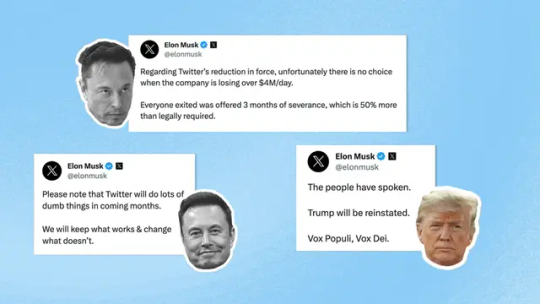
Elon Musk, one of the most influential figures on X, became one of Donald Trump’s biggest supporters, he has transformed X into a MAGA mouthpiece. Unlike traditional politicians, Musk isn’t a formal political actor, he’s a tech billionaire with a massive following (more than 200 million followers). His tweets during the election showed how digital citizenship can be used to influence politics on a massive scale. For example, Musk frequently tweeted in support of Trump, even updating his X bio to encourage people to read a specific article explaining why he backed Trump. These tweets didn’t just reinforce Trump’s messaging—they also encouraged Musk’s followers (tech enthusiasts, entrepreneurs, and young voters) to engage with Trump’s agenda. Furthermore, as the election draws closer, Musk has ramped up his pro-Trump efforts on X with dozens of political posts a day. He used X to promote a $47 offer to people who referred registered swing-state voters to sign a petition, a move that seemingly offered incentives for conservative-leaning voter registration in swing states (Ingram, 2024).
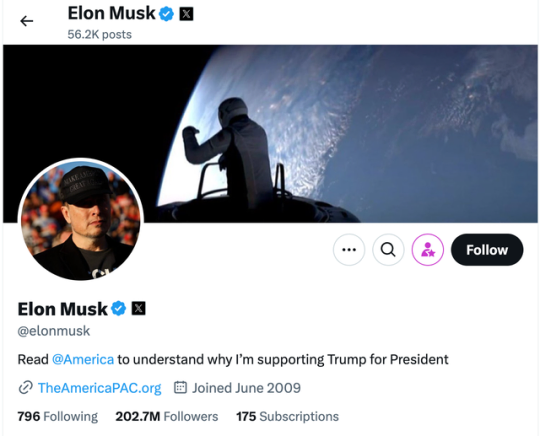
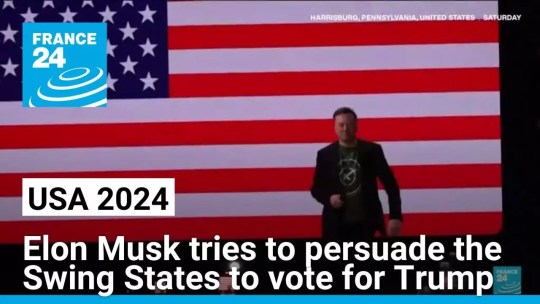
Musk’s tweets were often informal, provocative, and personal. This style of communication felt authentic and relatable, which is exactly what digital citizens value. It’s a far cry from the polished, calculated messaging of traditional campaigns. This approach mirrors Trump’s own use of Twitter during his 2016 and 2020 campaigns, where his unfiltered tweets created a sense of direct connection with voters. Musk’s tweets bypassed traditional media gatekeepers, letting him shape political narratives in real-time.
And here’s the thing: Trump’s win successfully proved that Musk’s tweets effectively promoted Trump’s campaign. Musk’s actions show how powerful digital citizenship can be in shaping political outcomes. But they also remind us that with great influence comes great responsibility. Social media has changed the game, but it’s up to us to play it wisely.
References:
Choi, M., Glassman, M., & Cristol, D. (2017). What it means to be a citizen in the internet age: Development of a reliable and valid digital citizenship scale. Computers & Education, 107, 100–112. https://doi.org/10.1016/j.compedu.2017.01.002
Ingram, D. (2024, October 31). How Elon Musk turned X into a pro-Trump echo chamber. NBC News. https://www.nbcnews.com/tech/social-media/elon-musk-turned-x-trump-echo-chamber-rcna174321
Jungherr, A. (2014). John H. Parmelee and Shannon L. Bichard. Politics and the Twitter Revolution: How Tweets Influence the Relationship between Political Leaders and the Public. Lanham, MD: Lexington Books. 2012. 247 pp. $79.00 (cloth). $34.99 (paper). Public Opinion Quarterly, 78(1), 197–199. https://doi.org/10.1093/poq/nft075
Rivera Maulucci, M. S., Pfirman, S., & Callahan, H. S. (2023). Transforming Education for Sustainability: Discourses on Justice, Inclusion, and Authenticity (1st ed., Vol. 7). Springer Nature. https://doi.org/10.1007/978-3-031-13536-1
0 notes
Text
Week 4: When Reality Bites Back Reality Show
What is TV Show?
Let’s talk about television shows for a second. Television shows, broadly defined, are programmed narratives or performances intended for broadcast and consumption on television. They cover a wide range of genres, from scripted dramas and comedies to unscripted reality shows, newscasts, and documentaries. According to Slater and Elliott (1982), television is more than just a medium; it shapes our worldview and reflects societal values. Reality TV, as a genre, distinguishes itself by focusing on unscripted scenarios involving real people, often engaged in competition, drama, or emotional journeys (Hill, A., 2005). Its appeal stems from the perceived authenticity and relatability it provides to audiences, blurring the distinction between entertainment and reality (Nweke, O., 2023).
But here’s the thing: When the illusion of authenticity shatters, and the chaos spills out? Let’s take MasterChef US Season 5 as a case study.

First, though, we need to talk about the real game-changer: social media. It’s not just about watching TV anymore; it’s about participating. We are no longer passive viewers, but active participants. According to Muralidharan (2023), "social media platforms have become crucial spaces for the discussion and contestation of media narratives." Fans analyze each episode, sharing memes, theories, and opinions. Shows frequently use interactive elements such as Facebook votes, Twitter polls, and Instagram Q&As to blur the distinction between broadcast and online communities. However, interconnectedness can be a double-edged sword, exacerbating controversies and fueling public debate.
Now, back to the MasterChef case. Unlike Big Brother or The Voice, where viewer votes directly impact the outcome, MasterChef is pre-recorded. There’s no “liveness,” no real-time influence from the audience (Mimi, 2004). And when the judges’ decisions feel off? Oh, the frustration is real. Mimi (2004) discusses how a lack of liveness can reduce the sense of shared experience and direct influence, potentially leading to viewer frustration when perceived injustices occur. And injustices, according to many viewers, did occur.

The controversy surrounding Courtney Lapresi's win in season 5, sparked an outbreak of anger among MasterChef fans. Many viewers accused the judges of bias, claiming that they favored Courtney from the start, overlooking her mistakes while penalizing other contestants more harshly. This sentiment was exacerbated by the perception that Elizabeth, Courtney's final competitor, was more deserving of the title. This scandal of Masterchef affected their reputation a lot when many fans took to social media, calling out the show’s perceived unfairness and vowing to never watch it again.
Here are some comments about Courtney wins on Facebook:




This whole mess highlights two things:
Reality TV is a construct. It’s not real reality. It’s edited, manipulated, and carefully curated to keep us hooked.
The audience holds power. Social media has given us a platform to call out injustices, demand accountability, and shape the future of these shows.
So, what’s the takeaway?
In my opinion, we need to watch these shows with a discerning eye, recognizing that what we see isn’t always the whole story. And as viewers, we’re not just passive consumers anymore—we’re active participants, stirring the pot and demanding better.
REFERENCES:
Hill, A. (2005). Reality TV : audiences and popular factual television (1st ed.). Routledge.
Mimi, W. (2004). Kinetic screens: epistemologies of movement at the interface LISA PA RKS. MediaSpace, 51–71. https://doi.org/10.4324/9780203010228-6
Muralidharan, M. (2023). True Story: What Reality TV Says About Us. Danielle J.Lindemann. Farrar, Straus and Giroux, 2022. 352 pp. $20.00 paper. The Journal of Popular Culture, 56(3-4), 755–757. https://doi.org/10.1111/jpcu.13223
Nweke, O. C. (2023). The Multifaceted World of Reality TV. Journal of Humanities, Arts and Social Science, 7(10), 2126-2132.
Slater, D., & Elliott, W. R. (1982). Television’s influence on social reality. Quarterly Journal of Speech, 68(1), 69–79. https://doi.org/10.1080/00335638209383593
0 notes
Text
Week 3: Is Tumblr a public sphere?
A popular microblogging and social media platform, such as Tumblr, may not seem like the most obvious example of a "public sphere." But hear me out: this platform demonstrates many of the characteristics of a space for public deliberation and discussion, as described by German philosopher Jürgen Habermas. According to Habermas (1990), the public sphere is a space where private individuals gather to discuss and use reason to generate critical knowledge, resulting in political change, and Tumblr fits this description in its own unique way.

Unlike platforms like Instagram or Facebook, which prioritize curated personal lives and algorithm-driven content, Tumblr thrives on anonymity and community-driven interactions. Every user can engage in discussions without the pressure of real-world identities, allowing for more honest and diverse perspectives.

Furthermore, Tumblr has long been defined by many of its users and the media as the “social justice” platform and “social justice warrior” (McCracken et al., 2020) because of its role in empowering vulnerable groups like feminists, people of color, LGBTQ+ individuals. For example, Tumblr had a huge impact on the LGBTQ+ community, particularly for young people to explore their gender and sexuality via shared experiences from others. A 2016 study, "Scrolling Beyond Binaries," found that 64% of LGBTQ+ respondents had used Tumblr to connect with "people who are like me" (Menz, 2022). And it is not only about identity, the growing presence of the LGBTQ+ community on Tumblr also attracts creative communities, such as artists, musicians, and writers, who create art with LGBTQ+ themes because they can’t find much visibility for lesbians in traditional media like TV shows, movies, or art (Ables, 2019). Therefore, Tumblr has proudly called itself "The Queerest Place on the Internet" (Garcia, 2021), presenting an obvious contrast to platforms like Instagram that have faced criticism for censoring LGBTQ+ content (Levesque, 2020).

Tumblr - An Imperfect Public Sphere
On the other hand, this platform's algorithm and tagging system can lead to echo chambers, in which users only see content that supports their beliefs (Kathleen et al, 2008). While niche communities can be empowering, they can also isolate users with opposing viewpoints, reducing opportunities for meaningful cross-community interactions. Then there's the issue of moderation (or lack thereof). Tumblr's anonymity promotes free expression, but it additionally promotes cyberbullying and harassment in some ways.

Worst of all, Tumblr has struggled with harmful and illegal content, including child pornography. This got so bad that Apple removed the Tumblr app from the App Store in 2018 (Silverstein, 2018). In response, Tumblr implemented a controversial NSFW ban, alienating many users and further harming the platform's reputation.
So, yes, Tumblr is a public sphere, albeit a flawed one. It's a place where voices from underrepresented groups can thrive, but it can also be hindered by echo chambers, harassment, and ineffective moderation.
REFERENCES
Ables, K. (2019, June 25). Tumblr Helped a Generation of LGBTQ+ Artists Come of Age. Artsy. https://www.artsy.net/article/artsy-editorial-tumblr-helped-generation-lgbtq-artists-age
Garcia, J. (2021, May 7). Tumblr Dubs Itself the “Queerest Place on the Internet.” MUO; MakeUseOf. https://www.makeuseof.com/tumblr-queerest-place-on-internet/
Kathleen Hall Jamieson and Cappella, J.N. (2008). Echo Chamber. Oxford University Press.
Levesque, B. (2020, December 30). Instagram’s anti-LGBTQ trolls use algorithms & zap gay influencers. Washington Blade: LGBTQ News, Politics, LGBTQ Rights, Gay News. https://www.washingtonblade.com/2020/12/30/instagrams-anti-lgbtq-trolls-use-algorithms-zap-gay-influencers/
McCracken, A., Cho, A., Stein, L., & Hoch, I. (2020). A Tumblr Book : platform and cultures. University of Michigan Press.https://doi.org/10.3998/mpub.11537055
Menz, A. (2022, May 2). How Tumblr Acts as a Crucial Resource for Online Queer Communities - Debating Communities and Networks XIII. Debating Communities and Networks XIII - This Is the Official Conference Site for the Debating Communities and Networks 13 Conference 2022. https://networkconference.netstudies.org/2022/csm/1191/how-tumblr-acts-as-a-crucial-resource-for-online-queer-communities/
Silverstein, J. (2018, November 20). Tumblr app disappears from Apple’s App Store because of child porn. Cbsnews.com; CBS News. https://www.cbsnews.com/news/tumblr-app-disappears-from-apple-app-store-because-of-child-porn/
1 note
·
View note